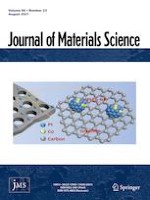04-05-2021 | Metals & corrosion
Investigating the mechanism of microbiologically influenced corrosion of carbon steel using X-ray micro-computed tomography
Published in: Journal of Materials Science | Issue 23/2021
Log inActivate our intelligent search to find suitable subject content or patents.
Select sections of text to find matching patents with Artificial Intelligence. powered by
Select sections of text to find additional relevant content using AI-assisted search. powered by
